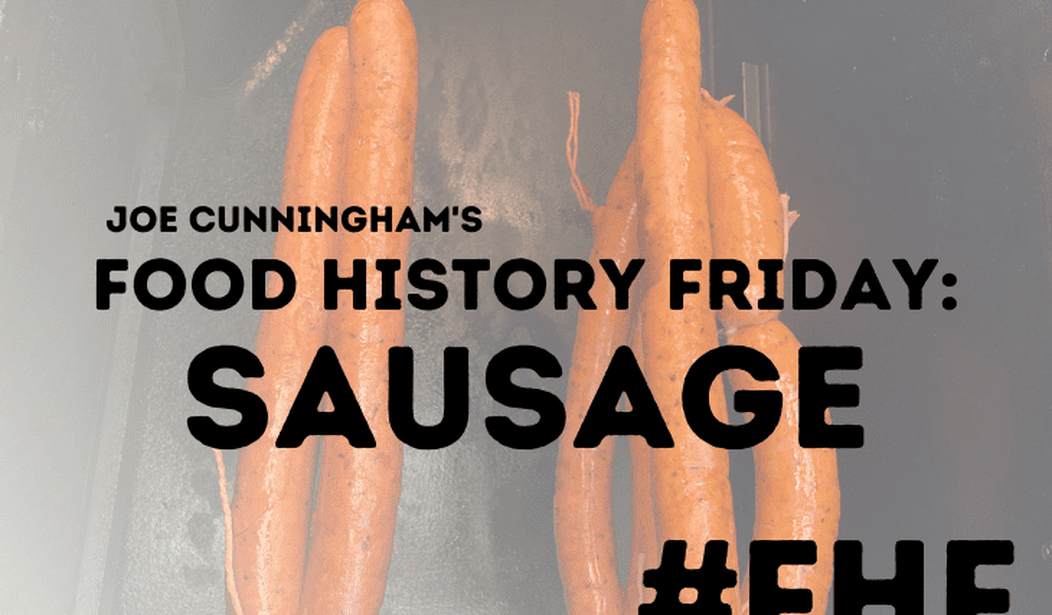There are two universal truths about food:
- Fat is flavor.
- Salt and smoke are the next best things.
Most people will generally agree with these two statements, though some will be hesitant to admit it. Oftentimes, “fat” and “salt” are considered bad words in the diet world. But more modern understandings of food and macronutrients are slowly but surely changing our outlooks on this.
It’s really hard to tell where the idea to set food next to fire came from. We will probably never know whether it was done on purpose or whether some cavemen found a deer burned to a crisp in a forest fire, but what we do know is that the flavor appealed to mankind and it could be preserved through this process.
Likewise, with no means of refrigeration in many cultures (outside of those that lived in arctic conditions year-round), man discovered salt was excellent at preserving food.
See, both salt and smoke work to dehydrate foods while infusing flavor. Salt, in particular, takes moisture out of whatever you’re preserving, concentrating its inherent flavors. The moisture — water molecules trapped in the cells of the food — naturally dilutes the flavor. Pulling it out via osmosis concentrates it and gives you a more flavorful food.
This works great with so many things, but meat in particular really transforms through this process.
In several cultures, we’ve seen the idea of grinding meat and stuffing it into some sort of vessel transform into a veritable charcuterie board across cultures. These stuffed vehicles of food are known commonly as “sausages,” which we first see evidence of thousands of years ago in the same place most of civilization appears to have sprouted from: Mesopotamia.
Somewhere around 5000 years ago, the Mesopotamians experimented with stuffing the meat from animals into the animals’ own intestines. This made it easy to store and to cure — the process of preserving through salting the meat. Intestinal lining breathes a bit, allowing the salt to draw moisture out while allowing just some of that saltiness in. That made a huge difference for the cradle of civilization, which was able to store food, allowing them to become less dependent on day-to-day hunting and gathering, or eating spoiled meat.
Not too long after that, we see some evidence sprouting up in China and Turkey of early attempts at sausage-making. By the mid-6th century B.C., Greece and Rome also had methods of creating sausage. As the ancient world grew and trade networks carried, among other things, spices across borders, the meats we were stuffing into intestinal lining gained flavor and became as much a luxury as they were necessary.
As much as Mesopotamia gets credit for “inventing” sausage, the real innovations appear to have come from what is modern-day Turkey. Spices like sumac, cumin, and garlic were added to the already popular mixture of salt, and pepper was also added into the mix. The result was a more intense flavor, and one that appealed to the tastebuds in ways the Mesopotamian sausages — made pretty much from whatever they found — didn’t.
The Chinese origin of sausage is what we call “Lap Cheong” today. It varies by region, though that is largely due to the fact that the different regions are so diverse in what grows in them, offering the ancestors of modern China the opportunity to experiment with everything from pork to duck to adding rice or even pig’s blood to the mixture.
The idea was either formed in or spread to other regions of the world, as well (and, naturally, once the Romans got ahold of it, it had the potential to spread like wildfire across their empire).
The modern-day sausage can be found in almost infinite forms across the world. Italian charcuterie is some of the most famous in the world, featuring sausages like pepperoni, salami, mortadella, and others. Germany is famous for its sausages, like bratwurst and frankfurters. In North Africa, merguez was developed with its own intense flavors. Poland gave us the kielbasa, and other countries developed their own takes.
And, of course, the United States has several different varieties as well.
However, it comes down to the same basic premise: Salt can preserve it, smoke can preserve it, and both can flavor it. For the home chef, it’s pretty easy to come up with your own. Most modern-day chefs prefer 70/30 lean to fat content, and you don’t have to stuff it to enjoy it. Form it into patties and cook in a hot skillet.
But, if you are stuffing it, don’t settle. Grinding and mixing, curing and/or smoking will intensify the flavors. There are natural casings (hog casings are fantastic) and synthetic ones. But, honestly, your own trial and error are necessary. These foods didn’t just appear overnight in any of these cultures. Someone (or multiple someones) sat around trying to find a way to make food easier to store and better to taste.

That’s all cooking is.














Join the conversation as a VIP Member